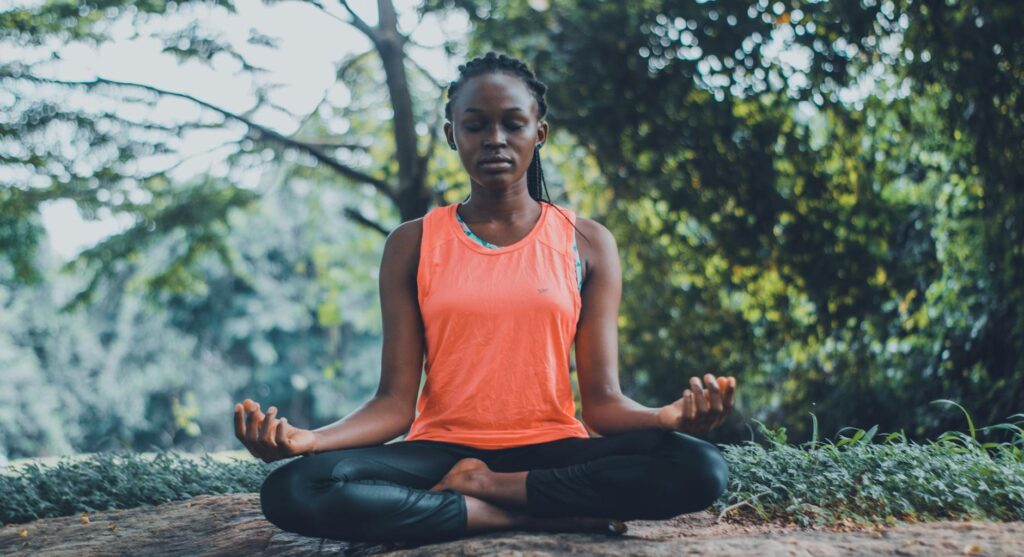What is restorative yoga practices?

What is restorative yoga practices?
In today’s fast-paced world, where stress and busyness often overshadow our well-being, restorative yoga practices emerge as a beacon of tranquility. This gentle form of yoga invites you to slow down, connect with your breath, and nurture your body and mind. If you’ve ever felt overwhelmed by life’s demands, restorative yoga can offer a soothing refuge. In this comprehensive guide, I’ll explore the essence of restorative yoga, its myriad benefits, and how you can seamlessly incorporate it into your daily routine.
Understanding Restorative Yoga
Restorative yoga is a calming practice designed to promote relaxation and healing. Unlike more vigorous styles of yoga, restorative yoga focuses on gentle movements and long-held poses that encourage deep relaxation. The essence of this practice lies in its ability to renew your energy and restore balance in both body and mind.
Origins and Evolution
Restorative yoga has roots in various traditions, but it gained prominence in the West through the teachings of notable figures like B.K.S. Iyengar and Judith Hanson Lasater. Iyengar’s emphasis on alignment and the use of props influenced the development of restorative practices. Over time, restorative yoga evolved into a unique discipline that places a strong emphasis on relaxation, allowing practitioners to experience a profound sense of peace and well-being.
Key Elements of Restorative Yoga
The components that define restorative yoga are integral to its effectiveness. Here are some key elements:
- Props: Restorative yoga heavily relies on props like bolsters, blankets, straps, and blocks. These tools support the body, ensuring that poses are comfortable and sustainable.
- Long-Held Poses: Unlike traditional yoga, restorative poses can be held for extended periods, often ranging from 5 to 20 minutes. This allows for deeper relaxation and encourages the body to release tension.
- Mindful Breathing: Practitioners are encouraged to focus on their breath. Mindful breathing enhances relaxation and helps you stay present throughout the practice.

Photo by Oluremi Adebayo
Benefits of Practicing Restorative Yoga
The advantages of restorative yoga extend beyond mere relaxation. This practice offers a holistic approach to well-being, benefiting the body, mind, and emotions.
Physical Benefits
Restorative yoga can enhance your physical health in several ways:
- Flexibility: The gentle stretches associated with restorative poses help increase flexibility without straining the body.
- Pain Relief: Many practitioners find relief from chronic pain conditions, as restorative yoga promotes muscle relaxation and alleviates tension.
- Improved Health: Regular practice can lead to lower blood pressure and improved circulation, making it an excellent complement to a healthy lifestyle. For more details on the health benefits, check out Cleveland Clinic’s insights on restorative yoga.
Mental and Emotional Benefits
Restorative yoga is a particularly effective tool for mental and emotional well-being. Here’s how:
- Stress Reduction: The calming nature of restorative yoga helps to lower cortisol levels, combating stress and promoting a sense of calm.
- Enhanced Focus: By encouraging mindfulness and presence, this practice can improve your concentration and mental clarity.
- Emotional Healing: Restorative yoga can provide a safe space for emotional release, helping you work through feelings of anxiety and sadness.
How to Incorporate Restorative Yoga into Daily Life
Integrating restorative yoga into your busy lifestyle can be both rewarding and manageable. Here are some practical tips to get you started.
Creating a Restorative Yoga Space
Setting up a peaceful environment is essential for a restorative practice. Consider these suggestions:
- Quiet Area: Find a quiet corner in your home where you won’t be disturbed.
- Comfortable Props: Gather bolsters, blankets, and any other props that help you feel supported.
- Soothing Ambiance: Dim the lights, play gentle music or nature sounds, and add elements like candles or essential oils to create a calming atmosphere.
Simple Restorative Yoga Poses
Starting with a few simple poses can make a significant difference in how you feel. Here are some easy poses to try:
- Legs Up the Wall Pose (Viparita Karani): This pose encourages relaxation and reduces stress on the legs and back.
- Supported Child’s Pose: Use a bolster or blanket to support your torso, allowing for deep relaxation.
- Reclined Bound Angle Pose (Supta Baddha Konasana): This pose opens up the hips and promotes a sense of calm.
For a deeper dive into restorative poses, you can explore 9 restorative yoga poses to relax or check out the benefits of restorative yoga.
Conclusion
Restorative yoga practices offer a vital remedy in our hectic lives, promoting relaxation, healing, and self-care. By incorporating this gentle form of yoga into your routine, you can cultivate a sense of balance and well-being that enriches your overall quality of life. I encourage you to explore restorative yoga and discover the profound peace it can bring to your mind and body. Embrace the calm, and let restorative yoga guide you toward a healthier, more balanced existence.